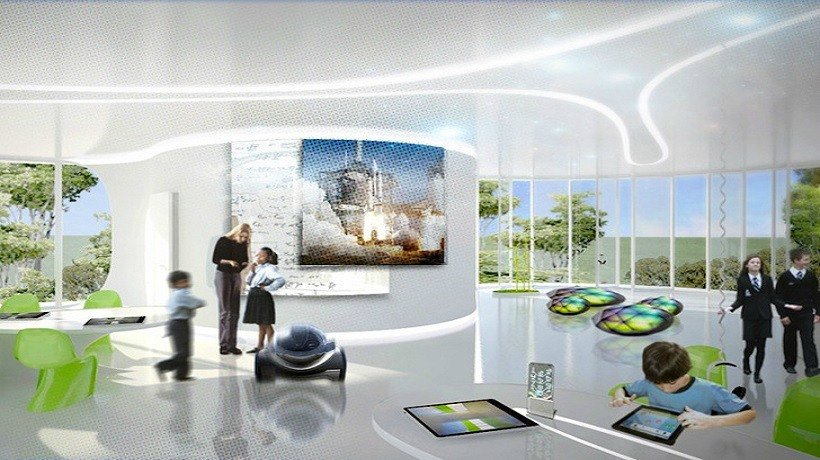Lessons to be learned: Perfecting the classroom of tomorrow, today
Newcastle University experts have carried out the first-ever study of interactive tables in the classroom as part of a major trial to understand the benefits of technology to teaching and learning.
Working with Longbenton Community College, in Newcastle, for six weeks, the team trialled the new tables to see how the technology – tipped as the next big development in schools – works in real-life and could be improved.
Interactive tables – which are also known as digital tabletops - work like an interactive whiteboard, a common tool in modern classrooms, but are on a flat table so students can work in groups around them.

Led by Dr Ahmed Kharrufa , a research associate from Newcastle University's Culture Lab, the team found that in order to make full use of the tables the technology would need to be fully embraced by teachers.
He said: "Interactive tables have the potential to be an exciting new way of learning in the classroom – but it is important that the issues we've identified are ironed out so they can be used effectively as soon as possible.
"Collaborative learning is increasingly considered to be a key skill and these devices will enable teachers and students to run group sessions in a new and interesting way so it is vital that the people who make the tables and those who design the software to run on them, get this right now."
Increasingly used as a learning tool in venues such as museum and galleries, the technology is still relatively new to the classroom and had previously only been tested by children in lab-based situations.
Two Year eight (ages 12 to 13) mixed ability classes were involved in the study, with groups of two to four pupils working together on seven interactive tables. Five teachers, who had different levels of teaching experience, gave lessons using the tabletops.
Each session used Digital Mysteries, software created by Ahmed Kharrufa to encourage collaborative learning. It has been designed especially for use on digital tabletops. The Digital Mysteries used were based on the subject being taught in each lesson and three mysteries had been created by teachers for their lessons.
The study raised several key issues which previous lab-based research had not identified. Researchers found digital tabletops and the software developed to be used on them, should be designed to increase teachers' awareness of how different groups are progressing. They should also be able to identify which students are actually participating in the activity. They also found there needs to be flexibility so teachers can progress the sessions they want to – for example, overriding stages in a programme if necessary. They should be able to freeze the tabletops and to project work onto one or all of the devices so teachers can share examples with the whole class.
The team also found that it was very important that teachers used the technology as part of the lesson – rather than as the focus of the session.
Professor David Leat, Professor of Curriculum Innovation at Newcastle University, who co-authored the paper, said: "This research raises a lot of interesting questions and the issues we identified were a direct result of the fact we were conducting this study in a real-life classroom setting. This shows how important studies like this are.
"Interactive tables are not an end to themselves; they are a tool like any other. To make the most use of them teachers have to make them part of the classroom activity they have planned – not make it the lesson activity."
Further research into how tabletops are used in the classroom is due to be carried out by the team later this year with another local school.
The paper "Tables in the Wild: Lessons from a large-scale multi-tabletop deployment," was presented at the recent 2013 ACM Conference on Human Factors in Computing in Paris
Post time: Dec-28-2021





